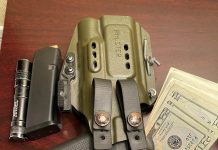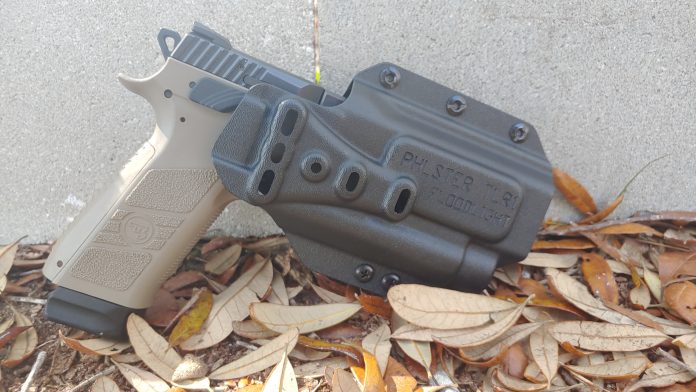
I acknowledge that AIWB is the ideal way to carry a gun. I get it, I do, but I still love OWB, aka outside the waistband. A little while back, I got my hands on a Phlster Floodlight AIWB rig and found it to be the best AIWB carry option I’ve ever gotten my hands on. I followed that line of logic, and it was easy to see why the Phlster Floodlight OWB was my next purchase.
Admittedly concealing the Phlster Floodlight OWB would be a challenge. It’s a big holster made for big guns. For cold winter carry with a coat, you’d be fine, but I’m not summer slumming it with a t-shirt and board shorts. It’s more appropriate on a battle belt or war rig than under a T-Shirt. So I did precisely that. I’ve been working on a PCC/Subgun belt from Sentry, and the Floodlight OWB will carry my sidearm.
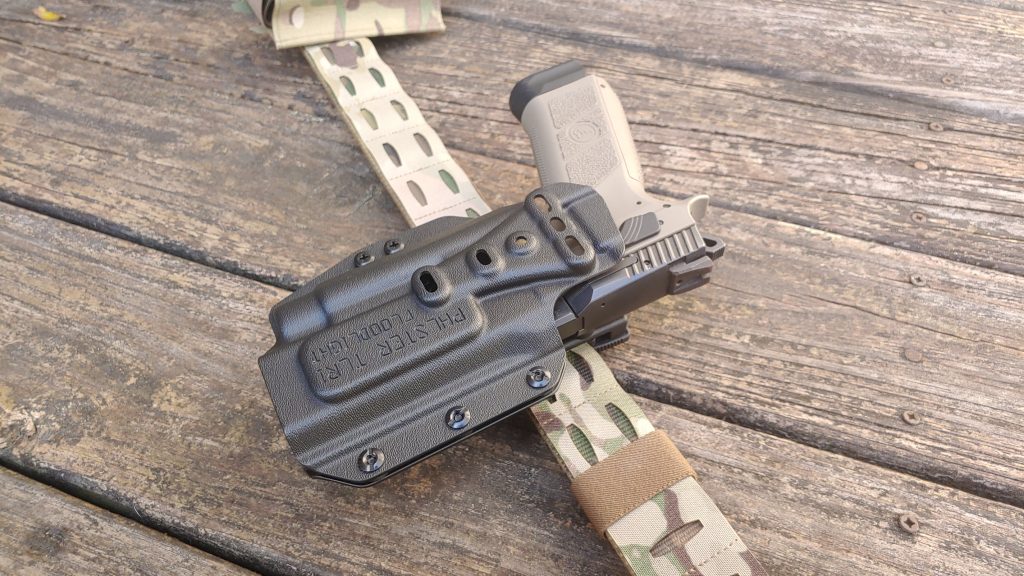
Setting up the Floodlight OWB
Like the AIWB variant, you can choose between a TLR 1 or Surefire X300, and it will work with the vast majority of compact and full-sized pistols. Instead of a shock cable to adjust retention, you have good ole fashion Chicago screws. The kit comes with three color-coded hardware sets that allow you to customize the portion of the holster that contacts the slide. The three hardware sets are sized differently to accommodate everything from tiny CZ slides to bulbous Glock slides.

Setup is easy and has a little trial and error to it. It’s good to take your time and make sure the gun sits safely in the holster with the right amount of retention for your needs. I made mine snug since it’s on a battle belt and would be ‘exposed.’ Active retention doesn’t live here folks, so some may prefer an alternative for duty use. As a regular dude who isn’t walking a beat or patrolling, it’s not an issue for me.
Enter Blade Tek, Safariland, and G-Code
A Tek Lok mount is included, but the Floodlight OWB works with mounts from Blade-Tech, Safariland, and G-Code. The Tek Lok is okay, but I’m looking to upgrade to a low Safariland mount shortly. I want the gun a little lower on the belt. The Tek Lok surprisingly fit around the entire belt and locked the holster into place without complaint. The Floodlight has numerous mounting slots that allow for cant adjustment too.

Picky shooters can configure the Floodlight OWB to sit however they desire. It just takes moving the mount around, experimenting, and finding what works for your setup. It works with lights, and Phlster cuts, and forms the holster to function with suppressor height sights and red dots as well. The bottom is opened to allow for the use of most compensators. My KE Arms Carry Comp has zero issues with the holster. Go full Gucci if you want.
Don’t forget that Phlster is even kind enough to accommodate those wrong-handed left-handed shooters. Even better, you can rig a belt with two guns and dual wield with identical holsters.
Bang Bang With the Phlster Floodlight OWB
When it comes time to turn lead into noise, the Floodlight performs admirably. The passive retention provides tension, and while it doesn’t just give the gun away. Users get a smooth draw. Nothing hangs on or creates a grinding type of friction on my gun.
Be aware there is no loud click as you reholster, and be assured it’s not needed. The sound is admittedly comforting, but it’s more of a psychological need than an actual one with many.
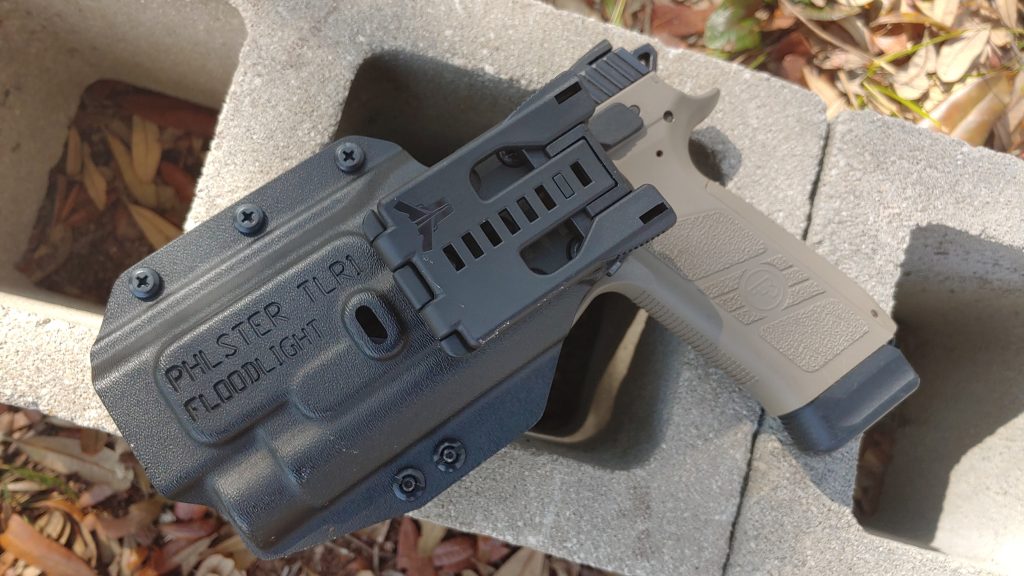
I’ve been trying to refine my offhand draw, and I’ve found the Phlster Floodlight OWB to be a great way to practice for OWB carry. The passive retention squares retention right in the middle, so drawing with either hand feels no different. I plan to build the technique here and refine it for concealed carry.
Since ammo is also scant, I’m getting way more dry fire in than anything else, and the Floodlight OWB has been a relatively constant companion. It allows for a safe and consistent draw every time. It’s also rugged and robust and can deal with the repetitive nature of dry fire drills. In all my hundreds of draws, nothing has loosened up or failed.
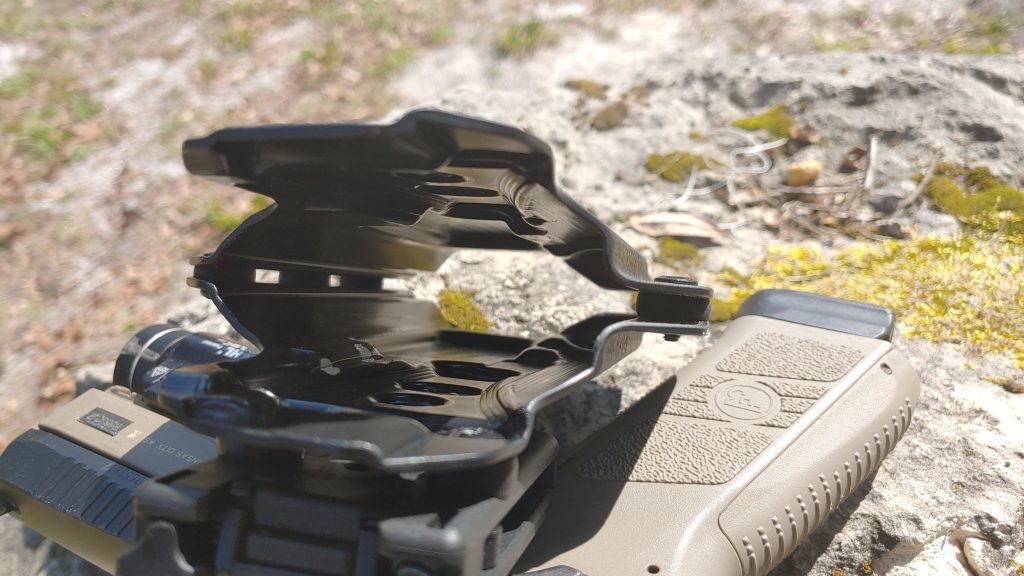
My range days are fewer and far between, but I find myself spending more time at the range when I do go. A good hot slide combined with repetitive draws has also yet to damage or deteriorate the holster by any means.
The Basics of Being a Holster
Outside the durability and design of the holster, it checks all the boxes I need it to.
Safety – The gun’s trigger is completely covered, and nothing inside the holster interacts with the trigger. The durability also means it doesn’t break and presents a dangerous issue down the road. Multiple guns fit in the holster without any fit issues. Except for Steyr pistols, so stay away from those.
I can also safely reholster over and over again without issue.
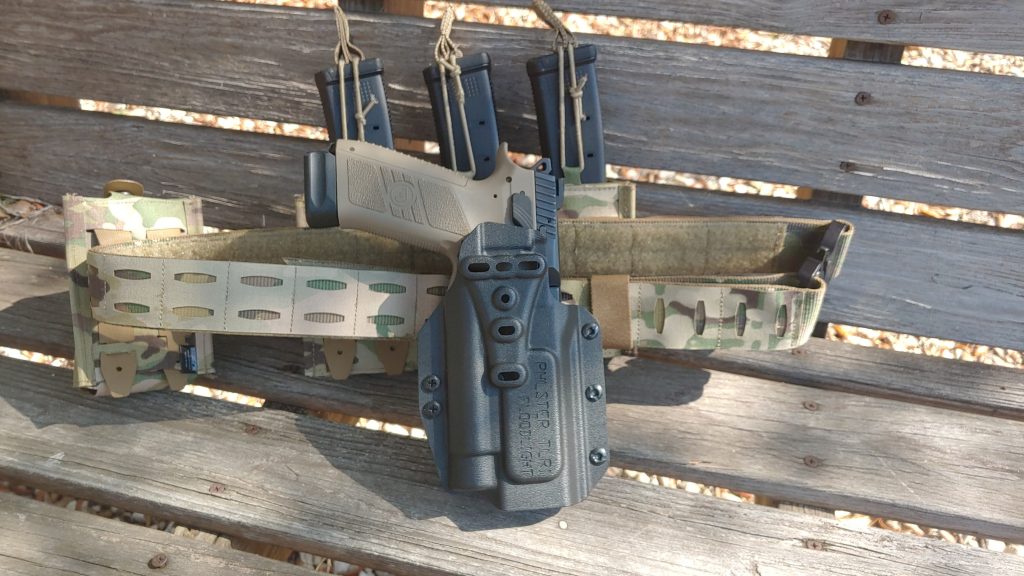
Access – An open-top holster makes access immediate. The ability to change cant around also ensures you can quickly draw the gun when worn in various positions.
Security – For its design, passive retention works completely fine. I dived into box jumps, sprints, and burpees, and my set retention was enough to keep the gun in the holster.
The Floodlight OWB checks my boxes, and I’ve found it to be a worthwhile investment. Not only as a holster but as a gun writer, I like having holsters I can use with multiple guns. It allows for consistent training and allows for consistent information when reviewing a new handgun. Beyond that, the Floodlight OWB works for training, competition, range use, and even outdoor exploring. Can it be concealed? Sure, but if you want concealment go with the AIWB variant of the Floodlight.
Phlster’s a small shop but has a seemingly spotless reputation, and I’m beginning to see why. Now I need an Enigma rig.


